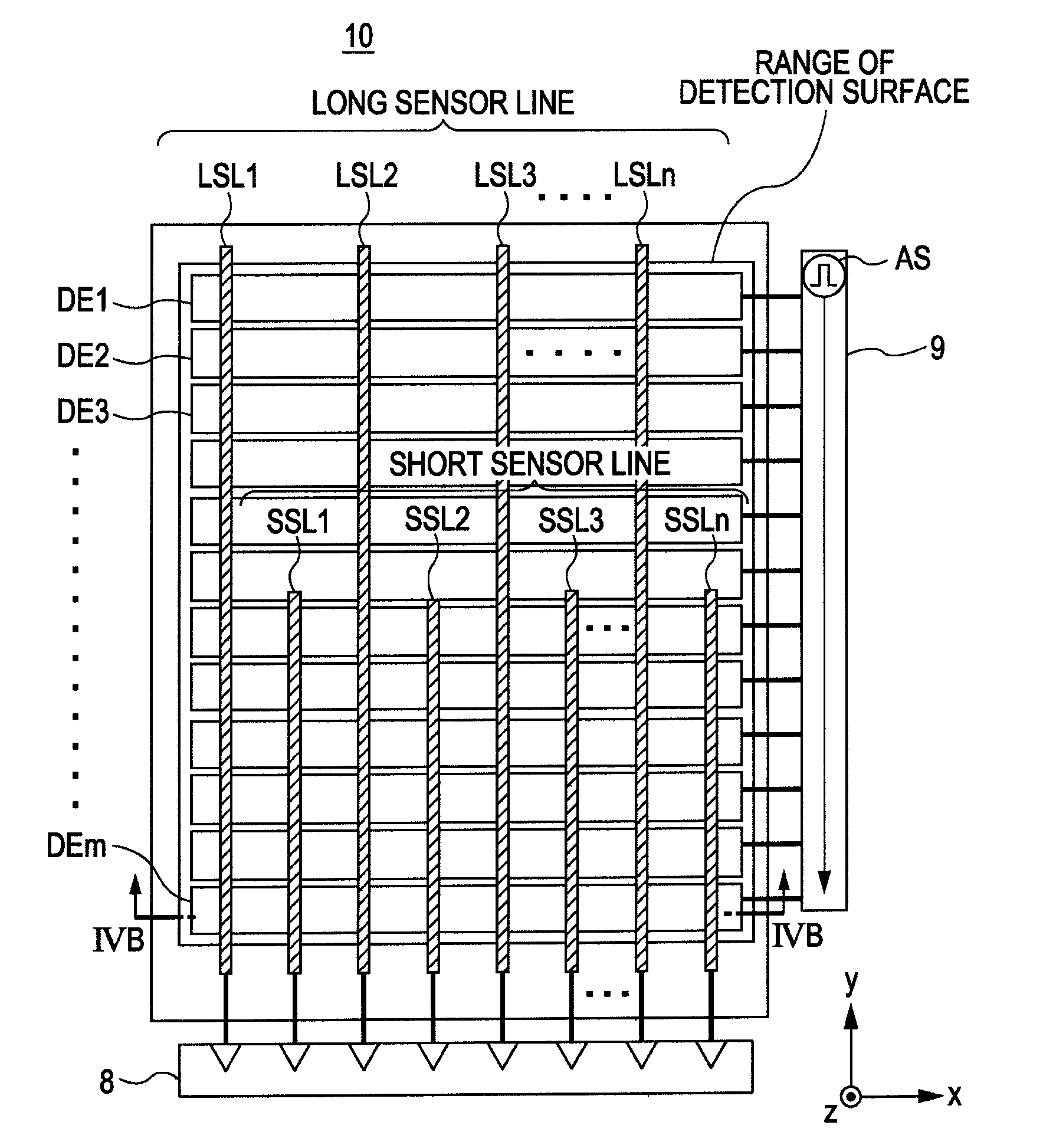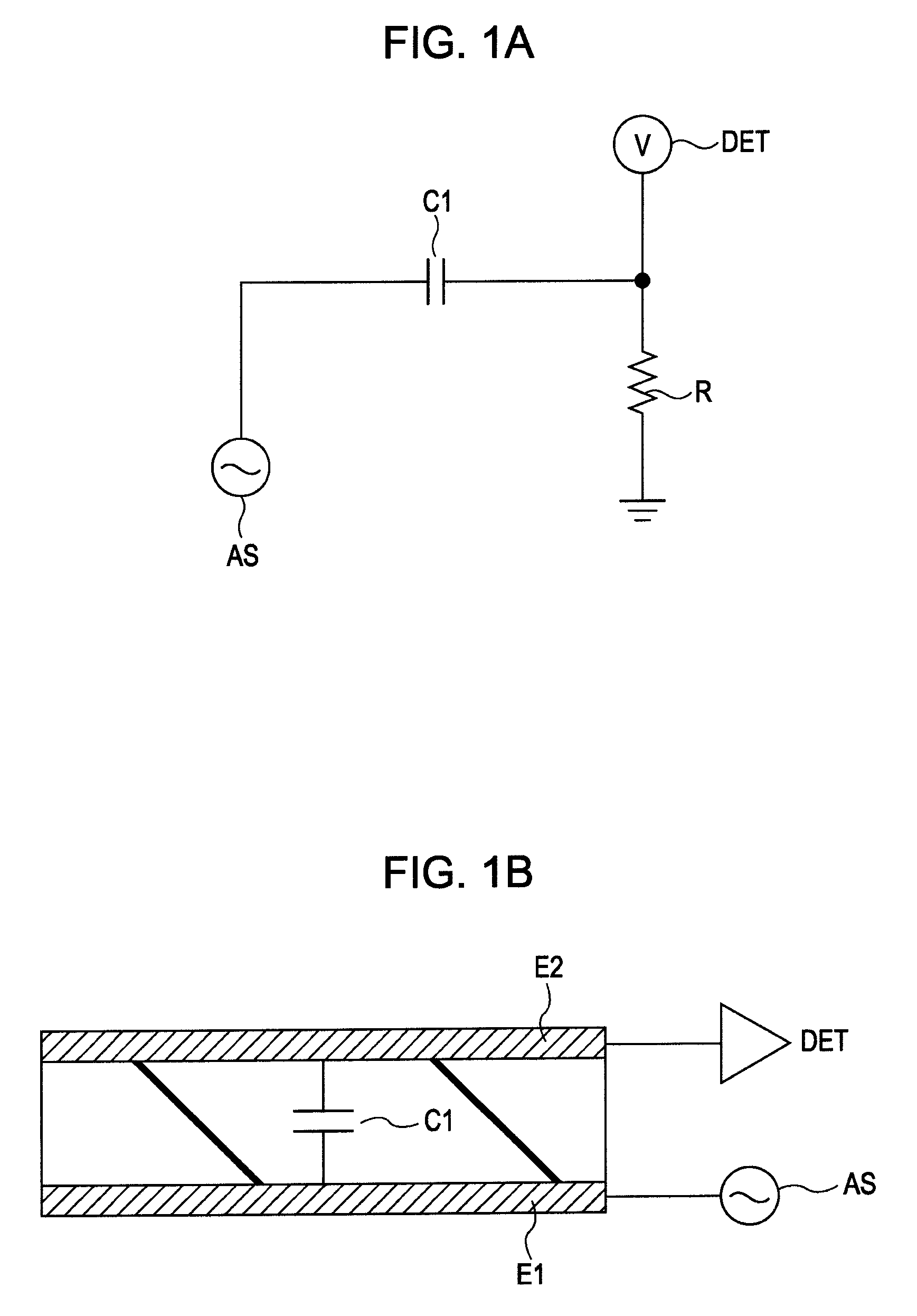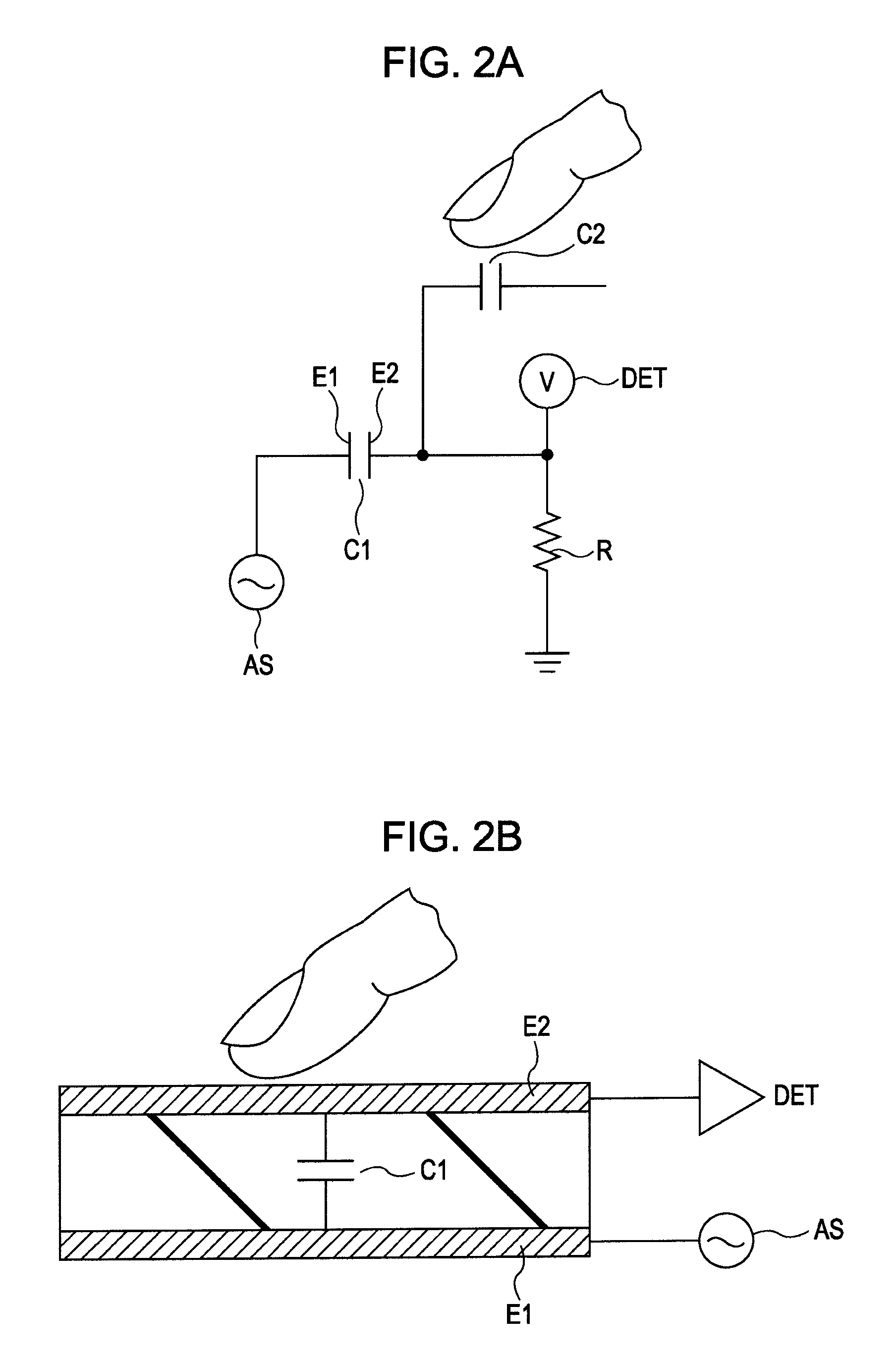Touch detection device and display device having touch sensor function
a technology of touch detection and display device, which is applied in the direction of instruments, computing, electric digital data processing, etc., can solve the problem of reducing the signal-to-noise ratio of detection signal
- Summary
- Abstract
- Description
- Claims
- Application Information
AI Technical Summary
Benefits of technology
Problems solved by technology
Method used
Image
Examples
first embodiment
1. First Embodiment
[0076][Basic Configuration and Operations for Touch-Sensing]
[0077]First, fundamentals of electrostatic capacitance element type touch-sensing will be described with reference to FIGS. 1A to 3C as assumptions of the first embodiment (common to other embodiments).
[0078]FIGS. 1A and 2A are equivalent circuit diagrams illustrating a touch sensor unit, and FIGS. 1B and 2B are constructional diagrams (schematic cross-sectional views) illustrating a touch sensor unit. Here, FIGS. 1A and 1B illustrate a case where a finger as a sensing target object is not in proximity of the sensor, and FIGS. 2A and 2B illustrate a case where a finger is disposed in proximity of or touches the sensor.
[0079]The illustrated touch sensor unit is an electrostatic capacitance type touch sensor and includes capacitance elements as shown in FIGS. 1B and 2B. Specifically, a capacitance element (electrostatic capacitance element) C1 includes a dielectric body D and a pair of electrodes arranged t...
first modification
2. First Modification
[0117]Here, another embodiment (modification) of changing the line capacitance ratio Kc will be described.
[0118]In the first modification, both the sensor lines have the same length, the same thickness, and the same material, but the width is different.
[0119]For example, a second sensor line having a width doubled by the first sensor line is considered. In this case, the line capacitance ratio Kc of the second sensor line against the first sensor line is approximately 2, and the denominator of the equation of FIG. 5C of the second sensor line becomes approximately a double of that of the first sensor line. In this case, if the widths of the m driving electrodes DEj are constant, the electrostatic capacitance Cp of the second sensor line becomes a double of that of the first sensor line. Therefore, in the first modification, the signal component (the crest value) of the detection signal becomes nearly the same between the first and second sensor lines.
second modification
3. Second Modification
[0120]In the second modification, both the sensor lines have the same thickness and material, but the length and the width are different.
[0121]For example, as shown in FIGS. 4A and 4B, it is assumed that the length of the short sensor line is a half (½) of the length of the long sensor line, and the width of the short sensor line is a half (½) of the width of the long sensor line. In this case, the denominator of the equation of FIG. 5C of the short sensor line becomes a quarter (¼) of that of the long sensor line (the line capacitance ratio Kc is 4 or ¼). In addition, the electrostatic capacitance Cp of the short sensor line becomes approximately a half (½) of that of the long sensor line. Therefore, in the second modification, the signal component (the crest value) of the detection signal output from the short sensor line becomes approximately a double of the signal component (the crest value) of the detection signal output from the long sensor line.
PUM
 Login to View More
Login to View More Abstract
Description
Claims
Application Information
 Login to View More
Login to View More - R&D
- Intellectual Property
- Life Sciences
- Materials
- Tech Scout
- Unparalleled Data Quality
- Higher Quality Content
- 60% Fewer Hallucinations
Browse by: Latest US Patents, China's latest patents, Technical Efficacy Thesaurus, Application Domain, Technology Topic, Popular Technical Reports.
© 2025 PatSnap. All rights reserved.Legal|Privacy policy|Modern Slavery Act Transparency Statement|Sitemap|About US| Contact US: help@patsnap.com



